Visitors to Bryan in 1902 walked unpaved streets and bought drinks at one of a dozen saloons. Many carried guns, and it was possible to witness a public hanging on the courthouse lawn. Local women sought to correct the situation and founded the Mutual Improvement Club.
“The ladies of the club were upset with the saloon-town atmosphere and wanted to bring in some culture and learning,” says Rachael C. Altman, manager of Bryan’s Carnegie History Center, housed in the town’s historic library.
Club member Lillie Wilson’s brother-in-law, Thomas W. Stewart, had been introduced to Andrew Carnegie. The Pennsylvania steel magnate was donating money to build libraries, and club leaders urged Wilson to contact Carnegie through her connection. “They were very persistent,” Altman says. Carnegie gave them a grant, and the Bryan Carnegie Library opened in December 1903.
A total of 2,509 Carnegie libraries were built between 1883 and 1929, including about 1,700 in the United States—32 of them in Texas. Many were funded through the efforts of women. Twenty of the original 32 buildings have been lost to demolition or fire, and eight of those surviving 12 remain in use, though not as libraries. Just four original Carnegie Libraries remain open in Texas—in Stamford, Ballinger, Franklin and Jefferson.
Carnegie sold his steel company to J.P. Morgan in 1901 for almost $500 million, making him the world’s richest man. But “the man who dies rich dies in disgrace,” he said as he gave away $350 million. Estimates suggest $60 million went specifically toward libraries because Carnegie believed a free library was the best gift he could give a community. The keystones of the library program required that the facilities be public and free, and Carnegie required recipient cities to invest at least 10% of the grant annually to fund the libraries.
The northeast Texas town of Pittsburg had fewer than 1,500 inhabitants when it received the first Carnegie grant in the state in 1898, using it to build a small library and reading room. It burned down in 1939.
In Ballinger, south of Abilene, a Carnegie library built in 1911 is on the Texas Forts Trail as well as listed on the National Register of Historic Places and recognized as a State Antiquities Landmark and a Recorded Texas Historic Landmark. The building has continuously served as a library but needed extensive renovations by 1976. “It was in such bad shape the city had already bought another place to build a library then decided to save this one,” says library director Carolyn Kraatz.

Steel magnate Andrew Carnegie.
NATIONAL PORTRAIT GALLERY/SMITHSONIAN
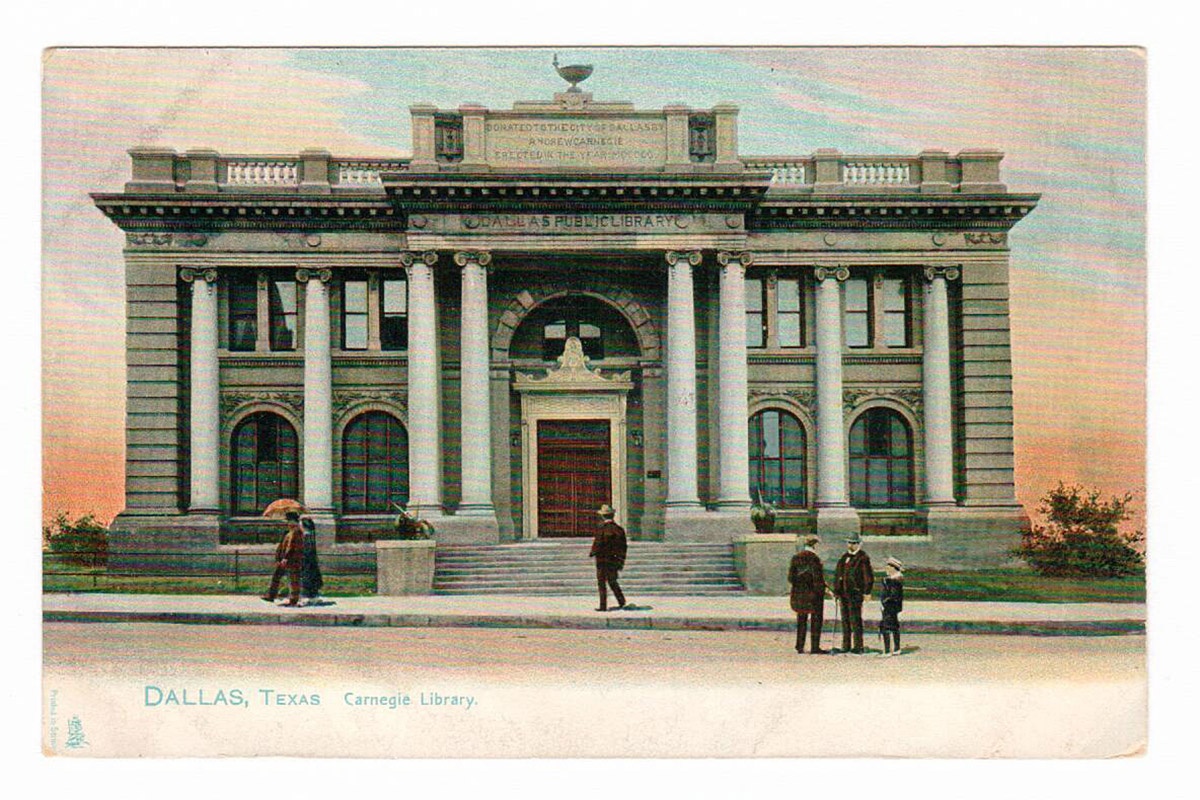
Carnegie library in Dallas.
Courtesy Judy Aulik

Carnegie library in Abilene.
Courtesy Judy Aulik
The Franklin Carnegie Library, north of Bryan, completed in 1914, served as a library through 1918 and then housed school classrooms and public activities until 1984. The building was restored and reopened as a library in May 2009. It originally came into being thanks to then-mayor R.M. Cole, who applied to Carnegie for funds in 1913.
Bryan’s library building, designed by a professor at Texas Agricultural and Mechanical College (now Texas A&M University), today houses the Carnegie History Center. It served as a library until 1969 and then was used for city offices, says Altman. Matching handcarved pine stairways, tongue-and-groove pine flooring on the first floor and a decorative pressed metal ceiling all are original. Its restoration in 1999 took place with the help of the Women’s Club, a modern incarnation of the Mutual Improvement Club.
Upstairs, the Bryan library hosted Red Cross gatherings during both world wars. The second floor now houses a genealogy research collection, which is free to the public along with access to online search services.
With so much of what people do being dependent on technology today, access to that technology is a crucial service provided by libraries, especially in small towns, says Karin Gerstenhaber of the Tocker Foundation, a nonprofit created in 1964 to support rural libraries in Texas.
“Carnegie felt that building libraries gave people opportunities to advance themselves,” she adds. “The libraries provided free access to information, and those buildings were used for so many different purposes that brought people together. They filled a real need.”
More Carnegie Libraries

A postcard of the Jefferson Carnegie Library.
Courtesy Judy Aulik

Carnegie library in Belton.
Courtesy Judy Aulik
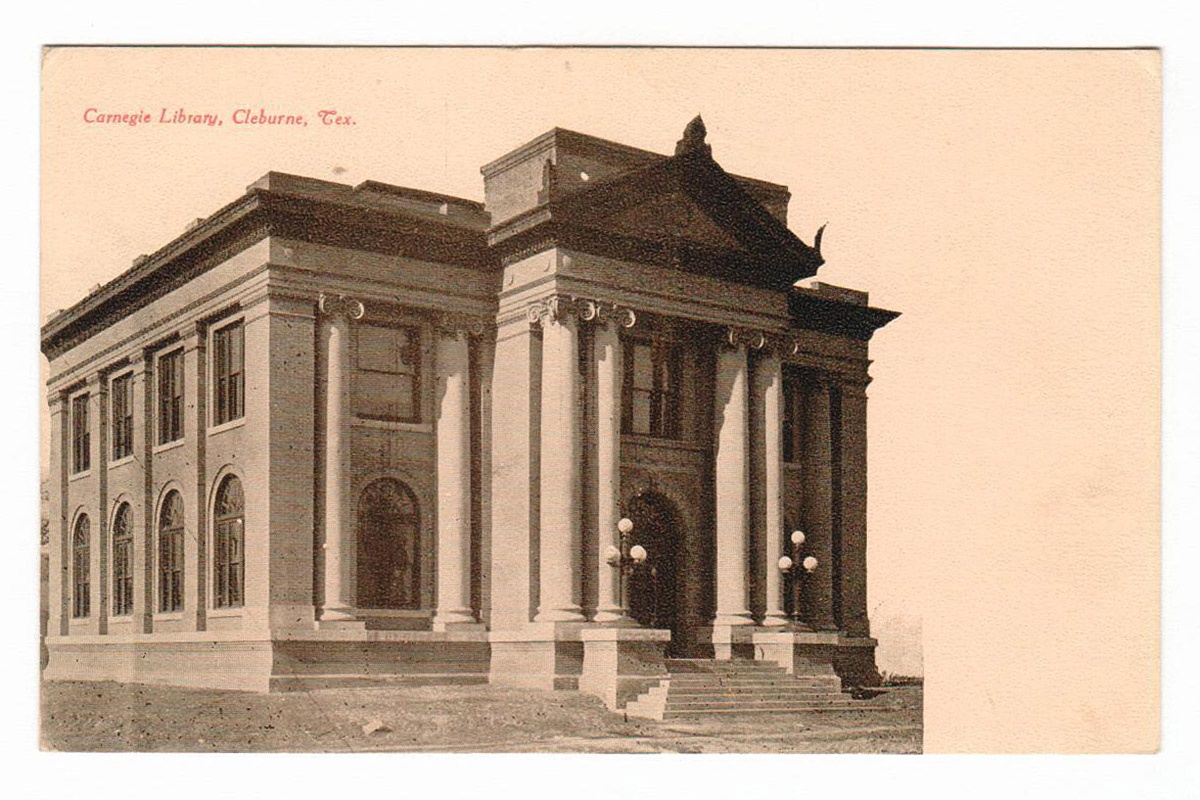
Carnegie library in Cleburne.
Courtesy Judy Aulik

Carnegie library in Corsicana.
Courtesy Judy Aulik

Carnegie library in Fort Worth.
Courtesy Judy Aulik

Carnegie library in Gainesville.
Courtesy Judy Aulik

Carnegie library in El Paso.
Courtesy Judy Aulik

Carnegie library in Greenville.
Courtesy Judy Aulik

Carnegie library in Houston.
Courtesy Judy Aulik

Carnegie library in Jefferson.
Courtesy Judy Aulik
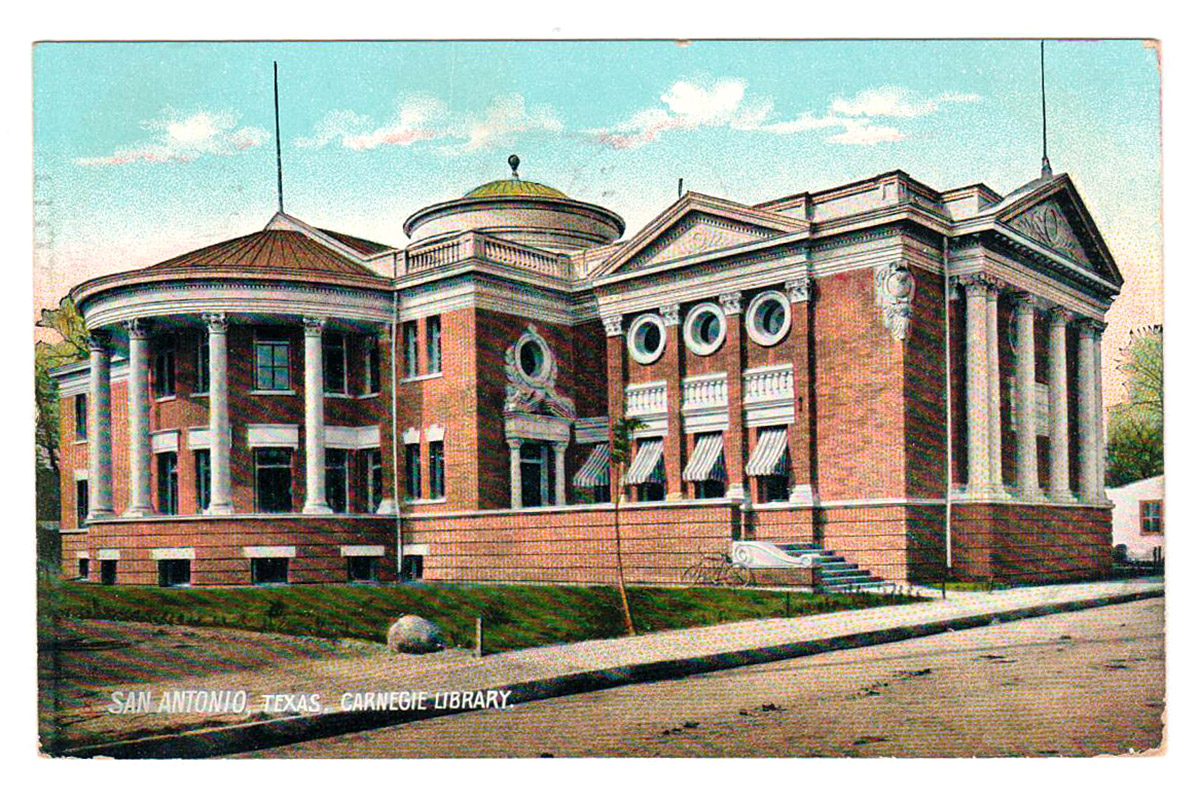
A postcard of the Carnegie library in San Antonio.
Courtesy Judy Aulik

A postcard of the Carnegie library in Sherman.
Courtesy Judy Aulik
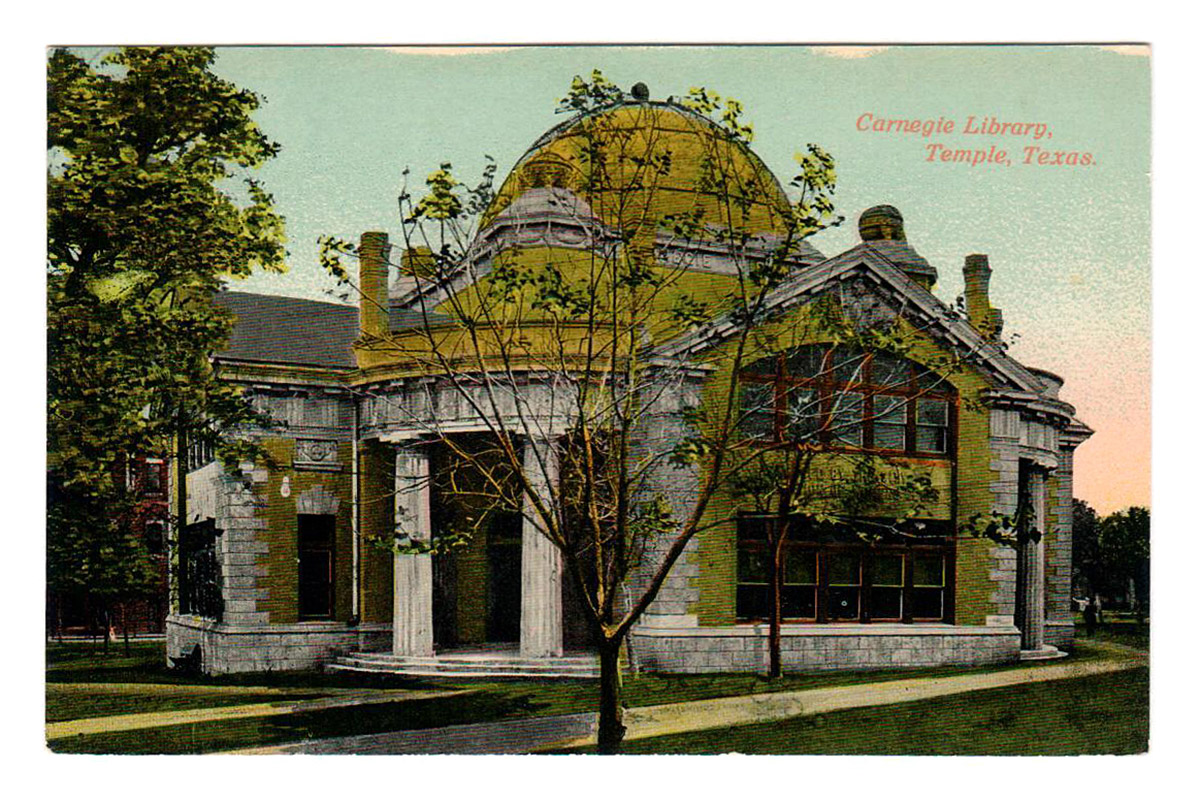
A postcard of the Carnegie library in Temple.
Courtesy Judy Aulik

A postcard of the Carnegie library in Terrell.
Courtesy Judy Aulik
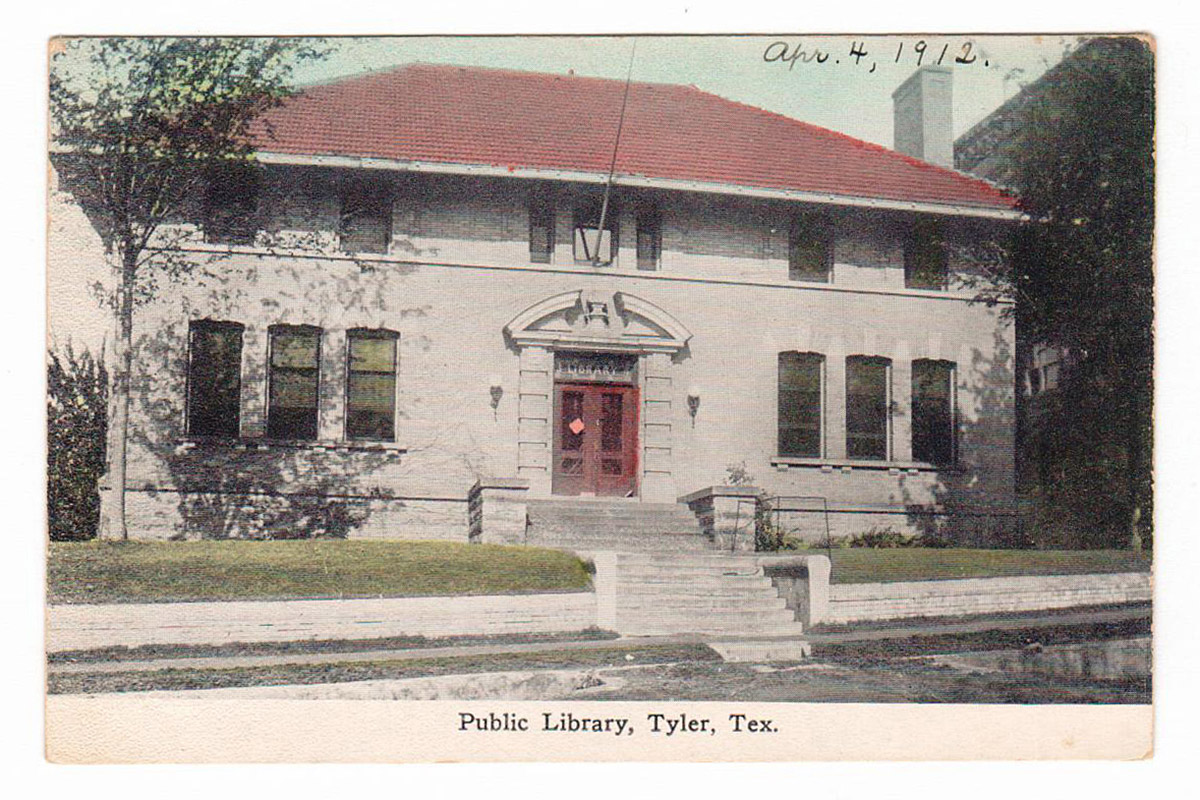
A postcard of the Carnegie library in Tyler.
Courtesy Judy Aulik

A postcard of the Carnegie library in Waco.
Courtesy Judy Aulik

A postcard of the Carnegie library in Winnsboro.
Courtesy Judy Aulik


